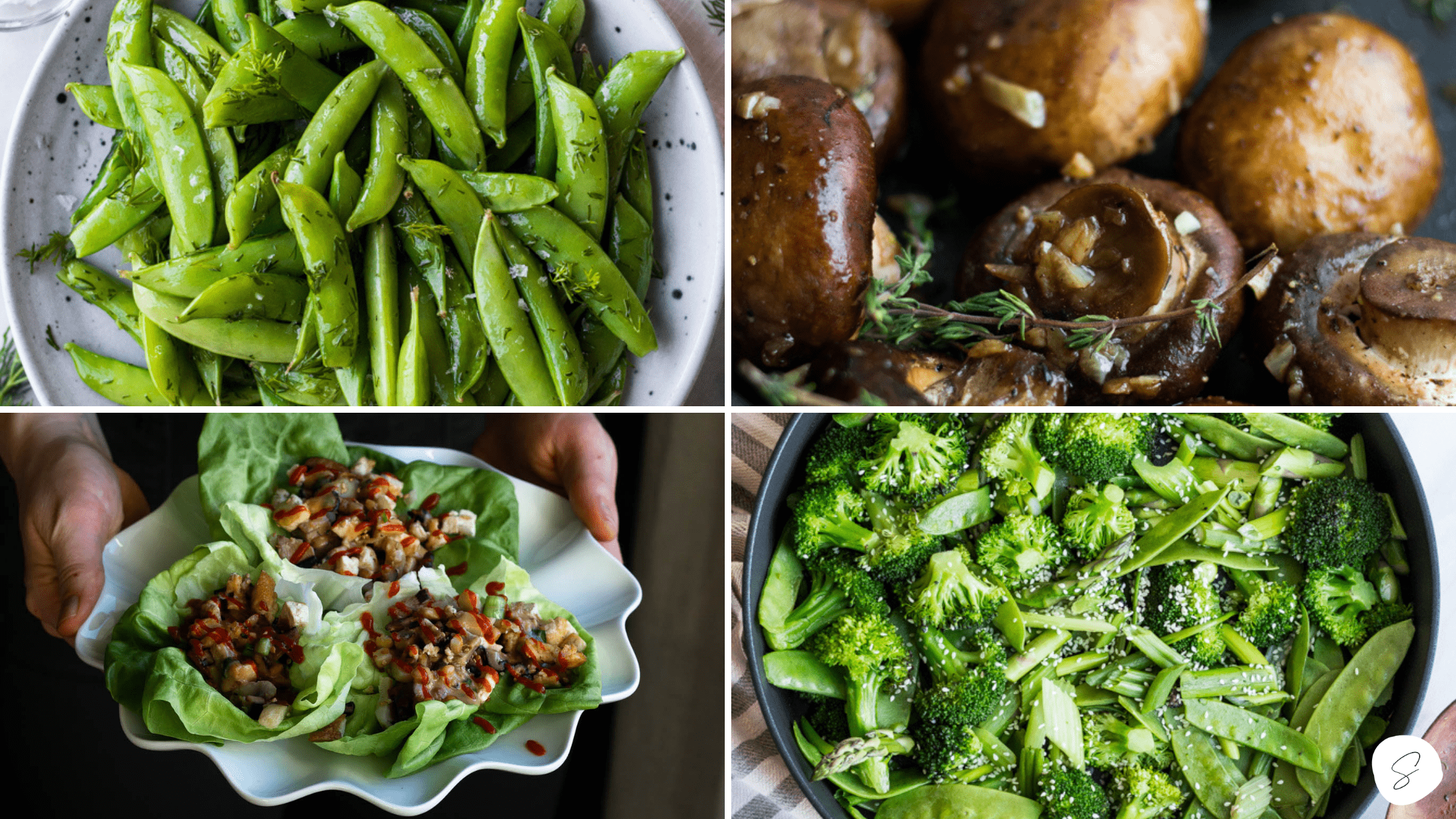A guide for how to sauté and stir fry vegetables! Learn about these two stovetop cooking methods that are easy and yield delicious results.
Stir-Frying Versus Sautéing
You might be wondering, “what’s the difference between stir-frying and sautéing?” You wouldn’t be the first, and likely not the last. These two uncomplicated cooking methods are go-to’s for cooks of all skill levels. Read on to learn the differences between the two, how to master each, and some delicious recipes to try your hand at!

Stir-Frying Vegetables
Stir-frying is a Chinese cooking technique that includes cooking food at high heat while being tossed or stirred to encourage even and fast cooking. It’s universally known as a method that is used to cook vegetables and meat in a light sauce, yielding a simple and healthy meal.
Compared to sautéing, stir-frying requires higher heat and more consistent movement. After all, the name “stir-fry” kind of says it all, doesn’t it?
Adding vegetables that will require additional time to soften is a key step to remember when stir-frying. Broccoli, cauliflower, potatoes, squash, and carrots are a few examples of vegetables that would be best to add to the pan first. More tender veg, such as asparagus, peapods, greens, celery, and bok choy likely won’t need as much time to soften and will require less cook time.
How To Stir-Fry Vegetables
- Add a small amount of oil to a large pan or wok. For about 4 cups of vegetables, I would start with 1 tablespoon of oil. I like using olive oil for stir-frying, and reserve more flavorful oils, like sesame oil, for lightly drizzling the final dish.
- Add your prepped veg in phases. As mentioned above, adding vegetables in phases will help ensure that your final dish has a consistent texture or bite. In other words, your broccoli won’t be mushy, while your carrots are still crisp.
- Turn up the heat. This is a quick-cooking method, which means you should be cooking over medium-high to high heat.
- Keep it moving. As its name implies, stir-frying requires you to stir (or toss!) your food to encourage even cooking. This is the time to practice that pan toss!
- Test and remove from heat as soon as it’s done. Test for doneness, transferring your final product to a plate or platter to discourage continued cooking.
Recipes To Stir-Fry Vegetables
Sautéing Vegetables
Sautéing is incredibly similar to stir-frying, except you use a little more fat and the process can take a little longer. As stir-frying is fast and at high heat, sautéing can take a little more time, and require a lower heat to allow for slow and even cooking.
How To Sauté Vegetables
- Add fat to a large sauté pan. Think olive oil butter, coconut oil or ghee. Feel free to use a combination the above, too! Butter and olive oil are commonly used together.
- Heat over medium-low heat. No need to get too wild here, as you want to gently cook your vegetables, as opposed to sear or potentially even char (which is welcome in stir-frying).
- Add your veg. Similarly to stir-frying, it’s a good practice to add more firm vegetables first and continue to add in phases.
- Check for doneness. Everyone’s “al dente” will look different for vegetables, which is a common term used for cooking pasta. What I mean by this is that some people may prefer super soft and tender sautéed asparagus, while others may prefer more of a bite. Time your favorite vegetables and take note of the cooking time to reach your preferred doneness.
Recipes To Sauté Vegetables
Find this collection of how to stir-fry and sauté helpful? Check out my “So Happy In The Kitchen” page, where I share helpful roundups of products, ingredient and cooking method education, and recipe tips and tricks! You can also shop all of my favorites here.






